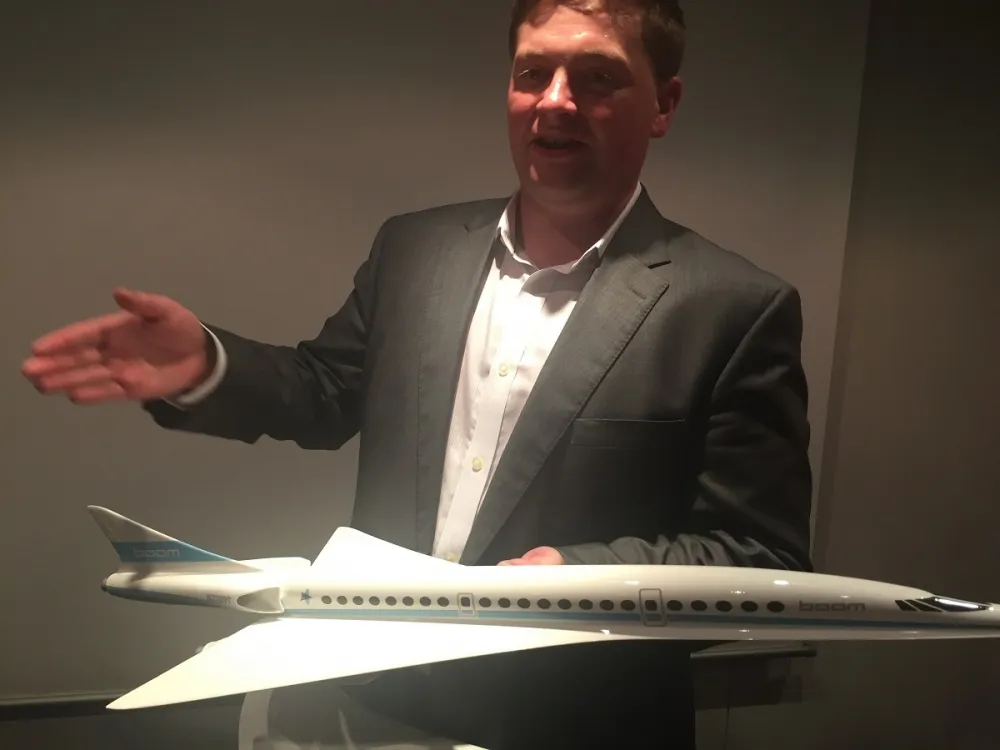
Boom times in the race for a new supersonic airliner
Jun 25, 2017

The race for a new supersonic airliner is experiencing a surge in interest and investment, driven by advancements in technology and a growing demand for faster air travel. Companies like Boom Supersonic and others are developing innovative designs aimed at reducing travel times significantly, with aspirations to make supersonic flights commercially viable once again. Environmental concerns and regulatory challenges are being addressed, as manufacturers strive to create quieter and more fuel-efficient aircraft. This resurgence reflects a broader trend in the aviation industry to enhance passenger experiences and reimagine how we connect globally, with the potential to revolutionize long-haul travel.
The Current Landscape of Supersonic Airliners
The race for a new supersonic airliner is heating up, with several companies vying to revolutionize air travel. With advancements in technology and a renewed focus on sustainability, the aviation industry is witnessing a remarkable resurgence in interest for supersonic travel. This article explores the key players, technological innovations, and market trends that are driving this boom in the supersonic airliner market.
Key Players in the Supersonic Race
Several companies are leading the charge in the development of new supersonic airliners. Below is a table highlighting some of the most prominent players in this space:
| Company | Aircraft Model | Status |
|---|---|---|
| Boom Supersonic | Overture | Prototype Development |
| NASA | X-59 QueSST | Testing Phase |
| Aerion Supersonic | Aerion AS2 | Concept Stage |
| Spike Aerospace | Spike S-512 | Prototype Development |
These companies are not only focusing on speed but are also incorporating eco-friendly technologies to address environmental concerns associated with supersonic flights.
Technological Innovations Driving Supersonic Travel
The current wave of supersonic airliners is defined by cutting-edge technologies aimed at improving performance while reducing noise and emissions. Key innovations include:
- Noise Reduction Technologies: New designs aim to minimize the sonic boom effect, making supersonic travel more acceptable over land.
- Advanced Aerodynamics: Streamlined shapes and advanced materials are being used to improve fuel efficiency and overall performance.
- Hybrid Propulsion Systems: Some companies are exploring hybrid engines that could significantly reduce carbon emissions.
These innovations not only enhance the feasibility of supersonic travel but also align with global sustainability goals, making the dream of faster-than-sound travel more attainable than ever.
Market Trends and Consumer Demand
The demand for faster air travel is on the rise, with business travelers and affluent consumers showing a keen interest in supersonic options. A recent survey indicated that:
- Over 60% of business travelers would consider flying supersonic if it significantly reduced travel time.
- Approximately 75% of consumers are willing to pay a premium for shorter flight durations.
These statistics indicate a burgeoning market for supersonic airliners, creating opportunities for companies to capitalize on the growing consumer appetite for speed and efficiency.
Challenges Facing Supersonic Airliners
Despite the excitement surrounding the development of new supersonic airliners, several challenges remain:
- Regulatory Hurdles: Regulatory bodies like the FAA and EASA are still working on new frameworks for supersonic flight, particularly over land due to noise concerns.
- Cost of Development: The financial investment required for research, development, and certification of these aircraft is substantial, posing a risk for many companies.
- Public Perception: Overcoming the negative perceptions associated with noise pollution and environmental impact is crucial for gaining public acceptance.
Addressing these challenges will be essential for the successful launch of new supersonic airliners. The companies that navigate these obstacles effectively are likely to lead the industry.
The Future of Supersonic Air Travel
As we look to the future, the potential for supersonic air travel is immense. With ongoing advancements in technology and increasing consumer interest, it is clear that the race for a new supersonic airliner is just beginning. The next decade could see the introduction of commercial supersonic flights, dramatically changing the landscape of air travel.
In conclusion, the boom times in the race for a new supersonic airliner signal a transformative period for the aviation industry. As key players continue to innovate and address challenges, the dream of faster, more efficient air travel inches closer to reality.
Related Articles

Explore Thailand: The Best Islands to Visit for Paradise, Adventure, and Relaxation

The Ultimate Guide to the Best Islands in Thailand for Your Next Getaway

Do babies need passports? How to get a passport for a newborn

How to get a U.S. passport fast: here’s how to expedite the process

What is Mobile Passport Control: 5 reasons why you should use it

SENTRI vs. Global Entry: A detailed guide

Do you need a passport to go to the Bahamas? Let’s find out

Do you need a passport to go to Mexico? A detailed guide

Do you need a passport to go to Canada? We got the answer

Do You Need a Passport for a Cruise: An Essential Travel Guide

Booster Seat Requirements: All the Rules to Follow in Your Rental Car

What Are the World’s Most Powerful Passports, and How Does Yours Rank?

How to Take a Passport Photo at Home: A Helpful Guide

You've got to have heart! Southwest's new livery

Your opinion: Should water be free on low cost carriers?

Young women bolder than guys as solo travellers
